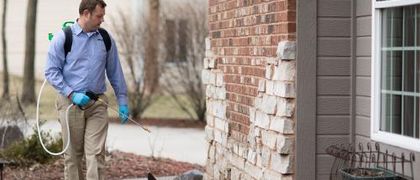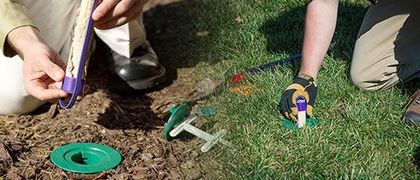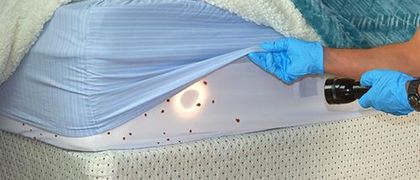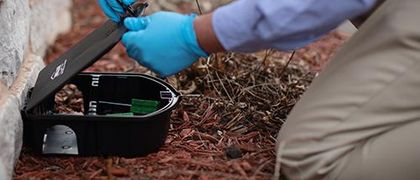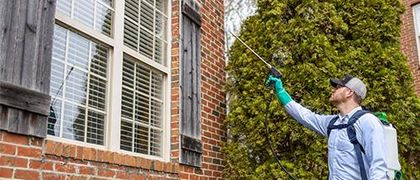Termite or Carpenter Ant? Signs, Differences & What to Do
If you notice wood damage in or around your home, you might wonder: Is it termites or carpenter ants?
These two pests are easy to confuse, but their behavior, appearance, and the kind of damage they cause are very different. As a homeowner, understanding the key differences can help you act fast and avoid significant damage to your wooden structures.
This guide will show you how to tell the difference between termites and carpenter ants, how to spot an infestation, and what to do next. If you live in the Midwest, in places like Des Moines, Omaha, or Kansas City, this is especially important, since both pests are common in our region.
Key Takeaways
- Carpenter ants hollow out wood; termites eat it.
- Termites have straight antennae and thick waists; ants have bent antennae and a pinched waist.
- Frass, sawdust, and mud tubes can help identify the pest.
- Both infestations require a professional pest control approach.
| Trait | Termites | Carpenter Ants |
|---|---|---|
| Antennae | Straight | Bent |
| Waist | Thick, no pinching | Narrow, pinched |
| Wings | Both pairs are the same size | Front wings are larger than the back wings |
| Color | Creamy white or light brown | Black or dark red/black |
| Wood Damage | Eat and digest wood | Hollow out wood to nest |
| Frass (Debris) | Pellet-like droppings | Sawdust-like shavings |
| Habitat | Soil, damp wood, hidden areas | Moist, rotting wood, wall voids |
| Noise | Silent | Sometimes, there is faint rustling at night |
Quick tip: If you see sawdust piles, think carpenter ants. If you see mud tubes or hollow wood, think termites.
Signs of Termites
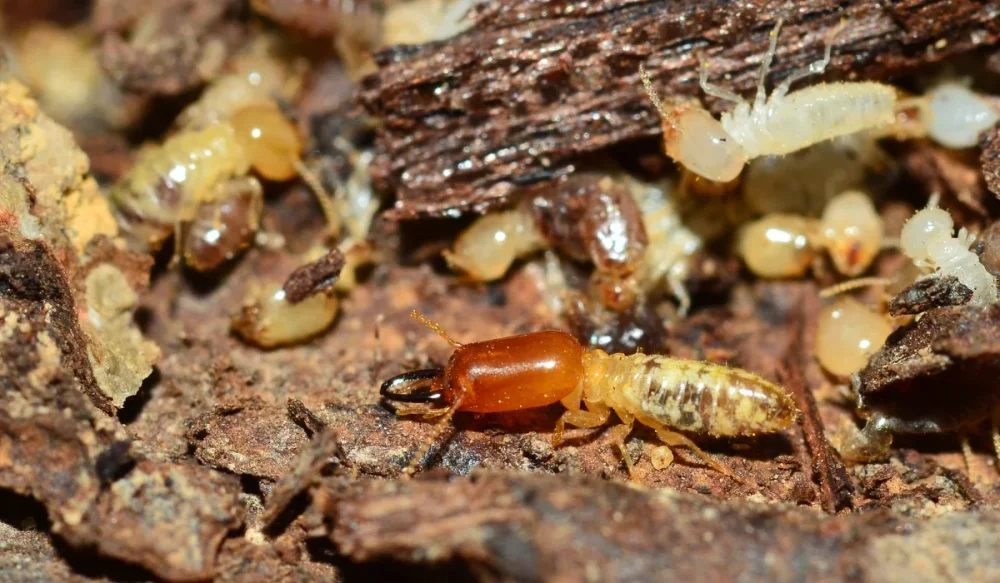
Subterranean termites are common in the Midwest and live underground, moving into homes to feed on cellulose-rich materials like wood and drywall. Drywood termites, while less common, can live directly in dry wood structures.
Watch for these signs of termites:
- Mud tubes running along baseboards, foundations, or walls. These help termite swarmers travel safely between the termite colony and food sources.
- Damaged wood that sounds hollow when tapped.
- You’ll often find frass (tiny termite droppings that look like small pellets) near damaged wood.
- Piles of discarded wings, which are often left behind after winged termites swarm.
- Bubbling paint or warped wood caused by internal termite damage.
If you notice these signs, especially in areas with moist wood, call a pest control professional immediately. Left untreated, a termite infestation can result in costly structural repairs.
Signs of Carpenter Ants
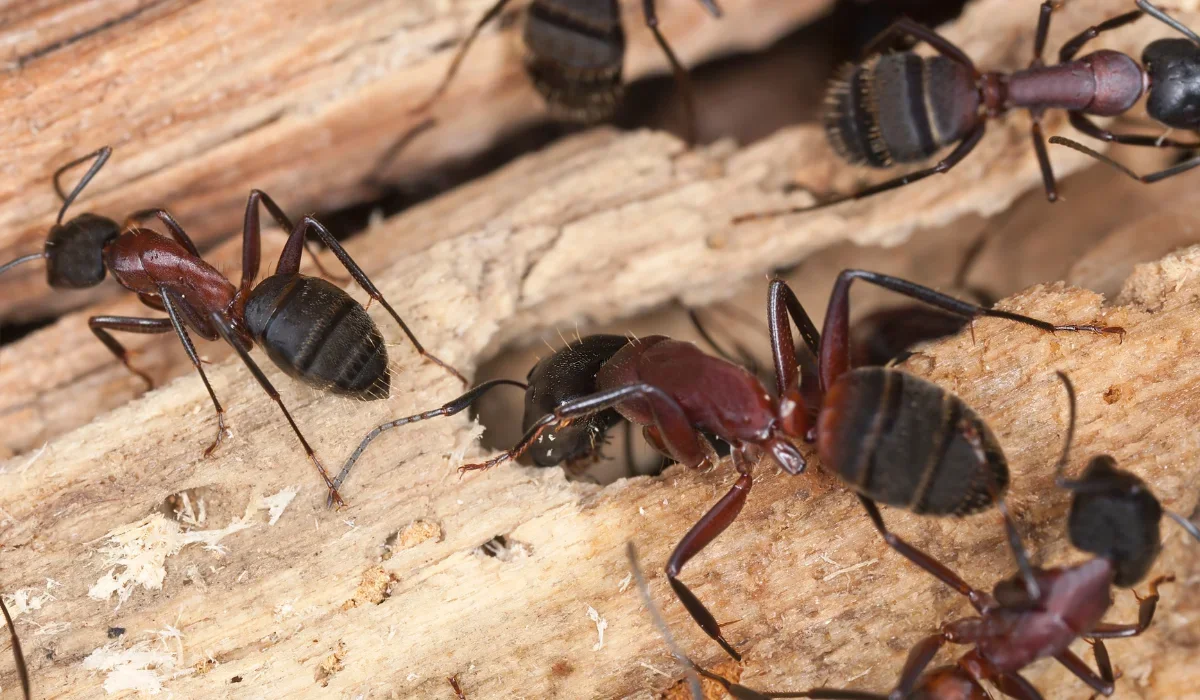
Unlike termites, carpenter ants don’t eat wood. Instead, they tunnel through it to build nests, usually in moist wood, like rotting decks, leaky windows, or damp wall voids.
Here’s how to recognize a carpenter ant infestation:
- Wood shavings or ant frass near baseboards or window sills.
- Noises coming from inside the walls at night.
- Large black ants, especially near sinks or bathrooms.
- Winged ants indoors in spring may mean a new colony is starting.
You might also spot ant colonies, especially around plumbing or leaking roof lines. They search for food at night and often travel far from the nest.
What to Do if You See Signs
If you spot signs of termites or carpenter ants:
- Don’t disturb the nest. This can cause pests to relocate or hide deeper.
- Take photos. Document any visible insects, frass, or damage.
- Avoid DIY fixes. Most home remedies won’t reach the colony or stop the infestation.
- Call a pest professional. Fast, targeted treatment can stop the damage before it spreads.
Prevention Tips
The best defense is spotting problems early and preventing them. Here’s what you can do:
- Repair water leaks that create moist wood conditions.
- Seal cracks and gaps in your foundation, around windows, and under doors.
- Trim trees and bushes away from your roof and siding.
- Store firewood at least 20 feet from your home.
- Get an annual inspection from a local pest expert who knows how to handle problems common in the Midwest.
Cost of Damage: Termites vs Carpenter Ants
Average Repair Costs
- Termite Damage Cost: Termites are more destructive because they eat wood. Repair bills often range from $3,000 to $8,000 for severe infestations, and in extreme cases can exceed $10,000.
- Carpenter Ant Damage Cost: Carpenter ants hollow out wood, but don’t eat it. Repairs usually cost $500 to $2,500, but infestations left untreated can still lead to major structural issues.
Why Termites Cost More
- Termites stay hidden longer, sometimes for years, before damage is evident.
- Large colonies eat 24/7, which accelerates destruction.
- Insurance rarely covers termite damage, making early detection critical.
Why You Need Professional Help for Termites or Carpenter Ants
A licensed exterminator can locate hidden colonies and stop infestations at the source. Whether you’re dealing with termites or ants, DIY methods rarely solve the problem for good.
We offer proven termite control solutions designed to eliminate colonies and protect your home long-term. We also provide targeted carpenter ant treatments that remove nests, close off entry points, and reduce what attracts ants in the first place.
At Miller Pest & Termite, we help homeowners across the Midwest protect their homes with tailored solutions for every infestation.
Contact Miller Pest & Termite today to schedule an inspection and get expert help protecting your home.
FAQs
Do carpenter ants damage homes as badly as termites?
No. Carpenter ants don’t eat wood, but tunneling can still weaken structures. Termites eat wood and usually cause more serious long-term damage.
When are termites most active?
Termites are usually most active in spring and summer, especially after rain. That’s when swarmers (reproductive termites) often emerge to start new colonies.
Should I try DIY treatments first?
DIY may kill a few pests you see, but it rarely solves the real problem. For a real solution, work with a pest control company that can address the entire termite infestation or carpenter ant infestation.
Get Help Now!

